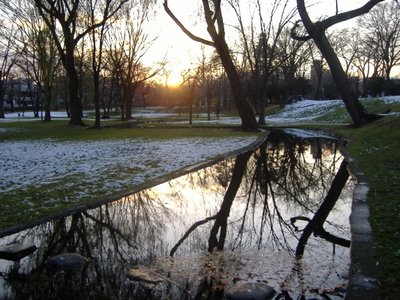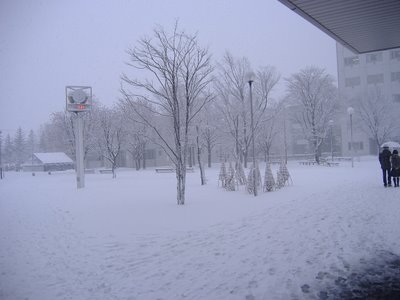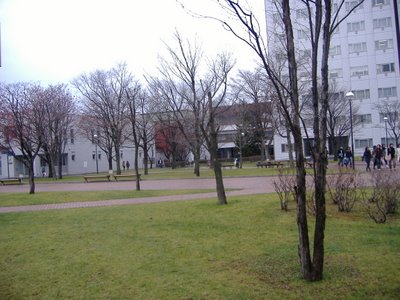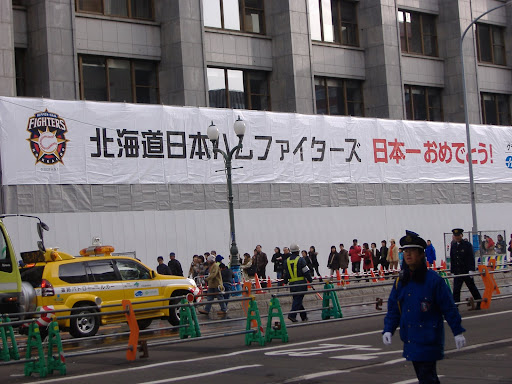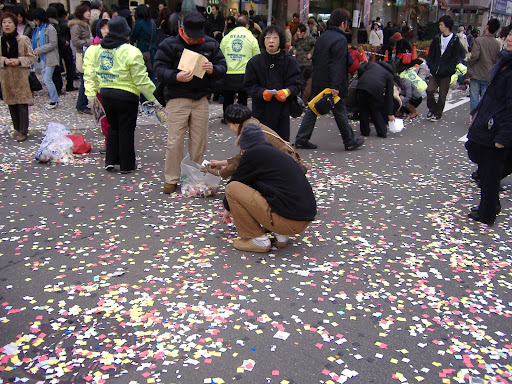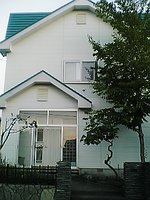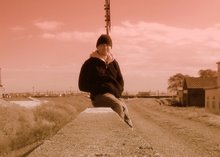This past weekend I was invited to come with my host family and the other families to Niseko Onsen. The whole trip was awesome and well worth it if anyone gets a chance to travel Hokkaido. Admittedly, Niseko is best visited in the middle of winter during the snow fall, visiting this glorious place when we did offered just as much beauty. Spelled ニセコ (ni-se-ko) in Katakana, it’s origins come from the Native Hokkaido Ainu language. Ainu names are a lot like Northwest Native American names in that even major cities like Sapporo (for example) come from Ainu Origins just like “Seattle” is named after Chief Seattle.
The method of travel was carpool. All of us and our gear fit in three cars. Off to Niseko we went like a SUV Caravan. We didn’t go directly there; instead we stopped at a couple of spots to enjoy the wonders of Hokkaido’s natural wonders.
Our first stop was an Ice Cream stand called the Aisu House or Ice Cream House. Aisu is Japanese for Ice Cream, but it’s usually spelled in Hiragana “あいす”。After filling ourselves with Hokkaido’s best ice cream we headed out towards Shikotsu-Toya National Park.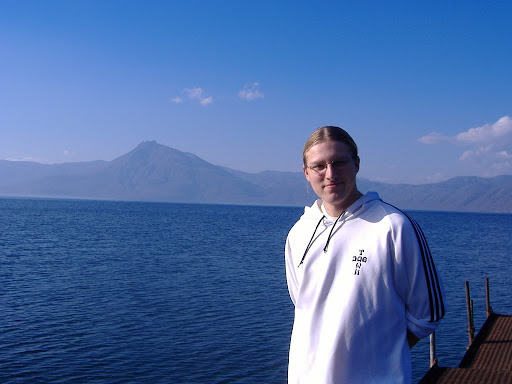 The trip was long and somewhat boring. Hokkaido (outside the city) first reminded me of Tillamook. Then as we got into the deeper countryside, it reminded me of East Oregon on the 395 highway. I mean… the hills and mountains and small farm towns really made me feel like I was back in Oregon on that road trip home. I suppose if I had to pick a small town to live in, I’d choose this area between Niseko and Otaru, because it has beauty, it reminds me of Oregon, and it’s still 100% Japan. Oh and don’t forget it’s plenty volcanic here, in fact, the volcano’s in the area are still pretty active making the area a Geologist’s (or geology lovers) dream! =)
The trip was long and somewhat boring. Hokkaido (outside the city) first reminded me of Tillamook. Then as we got into the deeper countryside, it reminded me of East Oregon on the 395 highway. I mean… the hills and mountains and small farm towns really made me feel like I was back in Oregon on that road trip home. I suppose if I had to pick a small town to live in, I’d choose this area between Niseko and Otaru, because it has beauty, it reminds me of Oregon, and it’s still 100% Japan. Oh and don’t forget it’s plenty volcanic here, in fact, the volcano’s in the area are still pretty active making the area a Geologist’s (or geology lovers) dream! =)
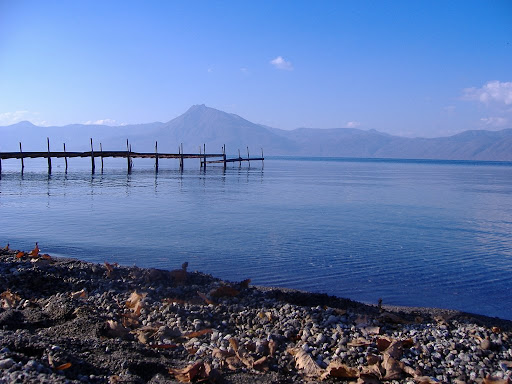 The scenery changed as we entered the boundaries of Shikotsu-Toya National Park. The lake here was absolutely beautiful. The landscape is simple amazing! Where we were was an old pier that leaned to the side and had an old rustic look that married with the lake and the mountains, made for a good shot. That wasn’t all, from the lake you could see the volcanos (and steam coming out of each peak!). According to the Lonely Planet Guide, The volcanoes are still making headlines: Usuzan erupted quite violently in 2000, sending boulders thousands of feet into the air. Apparently, in 1943, after a series of earthquakes, Showa Shin-Zan emerged as an upstart bump in some vegetable fields southeast of Toya-ko Onsen, it then surged upwards for two more years to reach its present height of 407m (1335.3’ ft.). The guide mentions that at the time, Japanese officials were keen to hush it up as they thought it was a bad omen and might portend an inauspicious end to WWII. Local officials were urged to douse the volcanic flames (they didn’t) so that Allied aircraft couldn’t use them for orientation. Showa-Shin-Zan is still belching sulphurous fumes, creating an awesome spectacle for visitors.
The scenery changed as we entered the boundaries of Shikotsu-Toya National Park. The lake here was absolutely beautiful. The landscape is simple amazing! Where we were was an old pier that leaned to the side and had an old rustic look that married with the lake and the mountains, made for a good shot. That wasn’t all, from the lake you could see the volcanos (and steam coming out of each peak!). According to the Lonely Planet Guide, The volcanoes are still making headlines: Usuzan erupted quite violently in 2000, sending boulders thousands of feet into the air. Apparently, in 1943, after a series of earthquakes, Showa Shin-Zan emerged as an upstart bump in some vegetable fields southeast of Toya-ko Onsen, it then surged upwards for two more years to reach its present height of 407m (1335.3’ ft.). The guide mentions that at the time, Japanese officials were keen to hush it up as they thought it was a bad omen and might portend an inauspicious end to WWII. Local officials were urged to douse the volcanic flames (they didn’t) so that Allied aircraft couldn’t use them for orientation. Showa-Shin-Zan is still belching sulphurous fumes, creating an awesome spectacle for visitors.  I can tell you all that it truly was pretty amazing to see all that coming out of a big hill.
I can tell you all that it truly was pretty amazing to see all that coming out of a big hill.
After messing around at the lake we all piled back in and headed for this place simple known as “Forest 276 Otaki.” I can’t really tell you why other then it was a cool farmer’s market and there were plenty of trees around. This place had that “logger jack” feel to it. It also had a restaurant that had big log beams holding the roof up. I also don’t really know why we stopped other then it being a good pit stop and a good stretch point.
 The next placed we stopped at was this little tofu place, but the tofu wasn’t the attraction. In front of us was a very large mountain and out of the ground were springs that apparently were fresh and clean enough to drink from. I was encouraged to drink from one of 6 or 7 spouts spurting water all over. I wasn’t alone either, there must have been nearly 20 people filling up bottles, jugs, and 5 & 10 gallon barrels. The tofu shop was pretty neat too. They had all sorts of tofu samples and tofu doughnuts that were tasty and different. I can’t say I’m a tofu nut, all the tofu samples tasted similar, but I’ll try anything once.
The next placed we stopped at was this little tofu place, but the tofu wasn’t the attraction. In front of us was a very large mountain and out of the ground were springs that apparently were fresh and clean enough to drink from. I was encouraged to drink from one of 6 or 7 spouts spurting water all over. I wasn’t alone either, there must have been nearly 20 people filling up bottles, jugs, and 5 & 10 gallon barrels. The tofu shop was pretty neat too. They had all sorts of tofu samples and tofu doughnuts that were tasty and different. I can’t say I’m a tofu nut, all the tofu samples tasted similar, but I’ll try anything once.
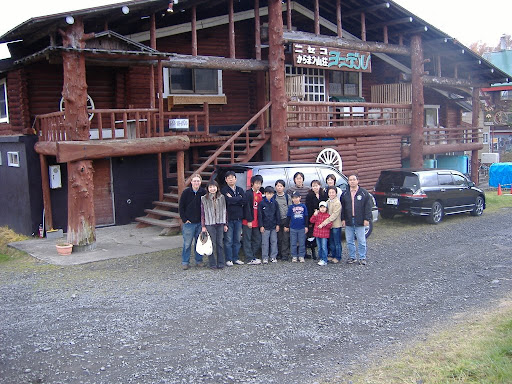 Finally we reached Niseko and checked into the “Yodel” B&B. We dropped a couple of bucks at the local Max Value (Supermarket) for some beer and munchies. Once we settled in we all decided to hit the Onsen. The Onsen access was actually in a Hotel (as most are). All you do is pay an access fee (500y) and bring a towel (important!) to save the rental fee. The Spa was really large and plenty deep to soak in. I don’t know why America doesn’t capitalize on this Onsen idea. I mean you could make bank with a Mt. Hood Onsen or a Bachelor Onsen back at home. Good deal… The onsen we went to was also co-ed.
Finally we reached Niseko and checked into the “Yodel” B&B. We dropped a couple of bucks at the local Max Value (Supermarket) for some beer and munchies. Once we settled in we all decided to hit the Onsen. The Onsen access was actually in a Hotel (as most are). All you do is pay an access fee (500y) and bring a towel (important!) to save the rental fee. The Spa was really large and plenty deep to soak in. I don’t know why America doesn’t capitalize on this Onsen idea. I mean you could make bank with a Mt. Hood Onsen or a Bachelor Onsen back at home. Good deal… The onsen we went to was also co-ed.
Ok… so back at the hotel was dinner waiting for us. I think we did the “shabbu shabbu” meal, if it’s called something else then my apologies. It’s basically this: You get a one burner stove in the middle of the table and then you get a tray of veggies and meat. On the stove is a big half dome cooking pan (cast iron perhaps) that you then cook and eat as you feel like. One burner/pan is good for about 4 people. It was like a personal Mongolian grill that you prepared for yourself. Good food! Plenty of meat and veggies with a fish platter on the side.
 That night the kids went off one place and the adults went in another and drank. We drank all night and told stories and talked about stuff. I got a good Japanese culture lesson out of it (besides the headache the next morning).
That night the kids went off one place and the adults went in another and drank. We drank all night and told stories and talked about stuff. I got a good Japanese culture lesson out of it (besides the headache the next morning).
The next morning we woke and was served Japanese breakfast. Breakfast IS different from a typical US breakfast. Really that’s all I’ll say for now. This down time provided for some picture time, so off I went taking pics of this and that.
 Finally the time came to head home. We headed to some train station that apparently had a steam engine ride to some resort town, but we missed the train and the next one was due in an hour so we decided to roll instead. I guess even Japanese people can be late for the train! Just kidding.
Finally the time came to head home. We headed to some train station that apparently had a steam engine ride to some resort town, but we missed the train and the next one was due in an hour so we decided to roll instead. I guess even Japanese people can be late for the train! Just kidding.
Next stop was Otamoi Coast. From the look on the outside you’d only see a shrine thingy and a lot of rocks, but that is only because the access to a large theme park was knocked out a couple of years ago. The beach however has a story behind it. The placard at the head of the trail read this:
Otamoi Coast Story
 Otamoi Coast is located in the in the north of Otaru city. It is part of 10km coastline between Cape Takashima and Shioya Bay.
Otamoi Coast is located in the in the north of Otaru city. It is part of 10km coastline between Cape Takashima and Shioya Bay.
The coast consists of a range of sheer cliffs of approximately 200m above the sea and strange shaped rocks. This area was designated as a Niseko, Shakotan, Otaru Coast Quasi-National Park in 1963 and it has always attracted people because of it spectacular vies together with the adjoining Shukutsu and Akiwa coasts.
There was once a marvelous amusement park in this picturesque place. At eh beginning of Showa period (1930’s), there was a prosperous Japanese restaurant “Janome” in Hanasono-cho.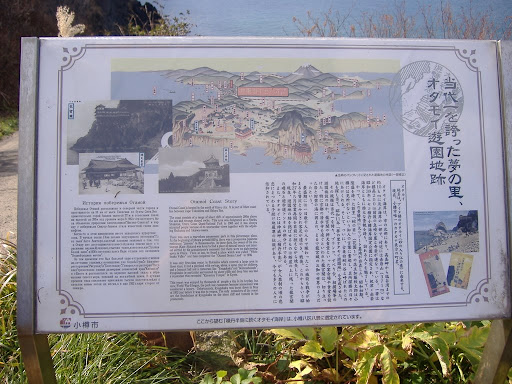 In those days, the owner of the restaurant (Kato Akitoro) was keen to find a place of natural beauty and interest stirred by his acquaintance’s comment that there were no sight-seeing spots in Otaru. Then, at last, he found a place which was called “White Snake Vallet” and then completed the “Otamoi Dream Land” in 1936.
In those days, the owner of the restaurant (Kato Akitoro) was keen to find a place of natural beauty and interest stirred by his acquaintance’s comment that there were no sight-seeing spots in Otaru. Then, at last, he found a place which was called “White Snake Vallet” and then completed the “Otamoi Dream Land” in 1936.
The placard says further that it was first class and people came from all over to see it.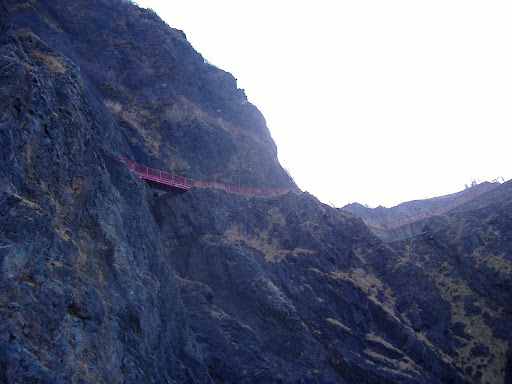 Unfortunately, the park was brunt down in May of 1952. The only reminders of the resort are on the cliff and tunnels in the promenade.
Unfortunately, the park was brunt down in May of 1952. The only reminders of the resort are on the cliff and tunnels in the promenade.
So that was that… Coast line was cool, but it was some hike to get there.
Shortly after getting there, we left for Otaru for some lunch and then headed home where I finished some Japanese homework. Oh and it rain just as we got home… Other then that it was good weather all around.
That’s it! That was my weekend… pretty cool!
~J out
